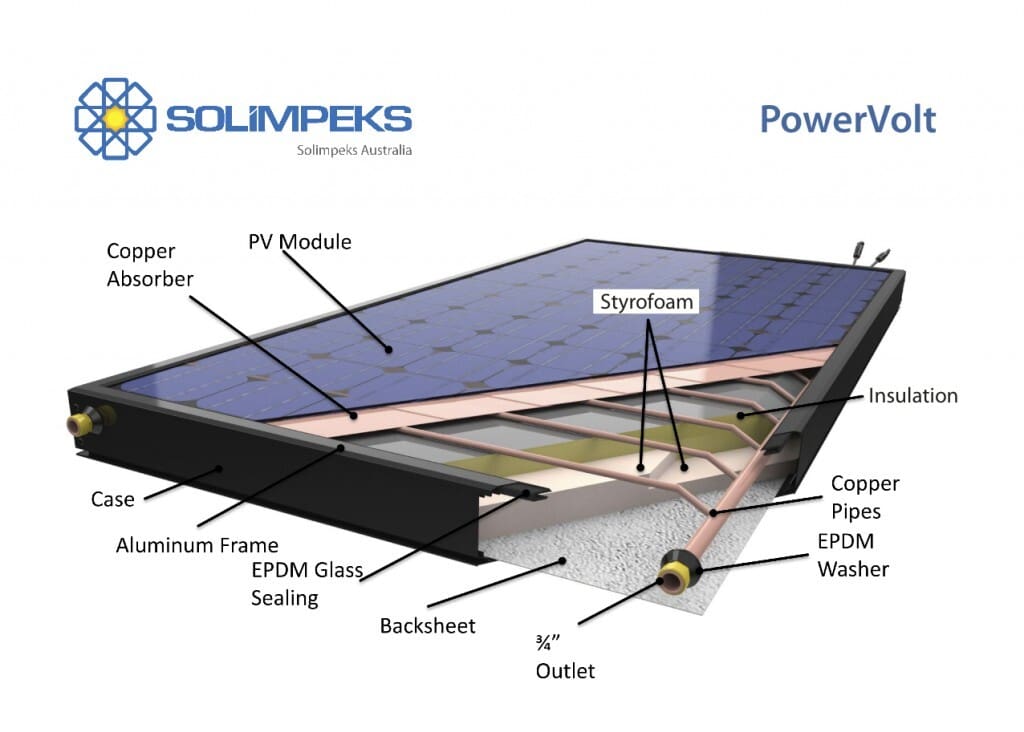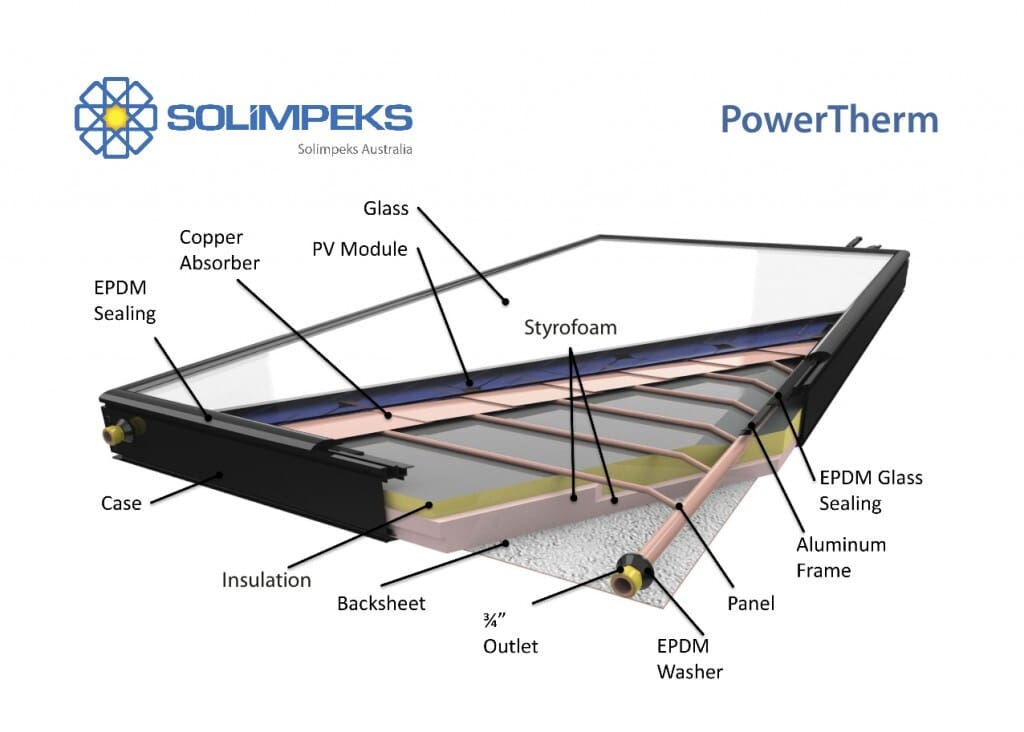Solimpeks is a manufacturer of unique hybrid solar photovoltaic/solar thermal modules–combined solar electricity and solar hot water. In addition to offering the ‘best of both worlds’, Solimpeks’ modules benefit from a number of synergies possible only with the combination of the two technologies; namely, improved electricity yields thanks to the cooling & insulating effect of the water, and more efficient use of roof space. Solimpeks modules come in either a ‘PV-biased’ version for greater electricity production, or a ‘thermal-biased’ version for greater water-heating power.
Solimpeks product range
Both models of Solimpeks’ modules produce both electricity and hot water. The differences between the solar hot water-biased PowerTherm and PV-biased PowerVolt are explained below. Common applications for both modules are providing electricity whilst simultaneously heating water, for example for pools, showers, or commercial use.
PowerVolt
The PowerVolt is Solimpeks’ ‘PV-biased’ module, meaning that it is designed for situations where generating electricity would be the primary goal, and heating water would be the secondary goal. PowerVolt is generally recommended for hot climates such as those in most regions of Australia. PowerVolt modules have an electricity generation capacity of 200 watts (W), and can heat 65L of water per hour. Their maximum operating temperature is up to 60C.
PowerTherm
The PowerTherm is Solimpeks’ ‘thermal-biased’ module, meaning that it is designed with heating water in mind as the primary goal. PowerTherm modules are recommended for cooler climates, and are generally more appropriate for Alpine regions in Australia or most of New Zealand. They have an electricity generation capacity of 180W and can also heat water at a flow rate of 65L/h. Their maximum operating temperature is around 70C.
Download a data sheet: Solimpeks PowerVolt and PowerTherm (pdf)
Solimpeks solar modules: Points of difference
–Solar electricity and solar hot water in a single unit, saving costs on installations on homes and businesses interested in installing both
-For those who do not require a large amount of solar hot water (SHW) capacity, Solimpeks modules can be installed alongside standard, electricity-producing solar PV modules.
-Thanks to the heat absorption function of the solar thermal portion of the module, PowerVolt modules can produce up to 15% more power compared to modules of similar dimensions because of the lower operating temperatures, even more so when an optimiser-based inverter is used.
–Heats or pre-heats water for pools and showers just like a standard solar hot water unit.
–Can be used in any commercial or light industrial application where heat or pre-heat is required.
About Solimpeks
Headquarters: Izmir, Turkey
Australian Headquarters: Sydney, Australia
History in the industry: Solimpeks has been designing and manufacturing solar panels since 1973. It manufacturers solar thermal technology on an OEM basis for some of Europe’s most prestigious Solar Thermal companies.
Contact information: Georgie Ling – georgie.ling@solimpeks.com.au
© 2013 Solar Choice Pty Ltd


How do these modules maintain a lower temperature? I would assume that if the water in your solar collector heats to 60-70 degrees C that the cells would actually stay hotter for longer? Am I missing something?
Hi Thomas,
We got in touch with Solimek’s engineering team to get an answer on this. Their response below: